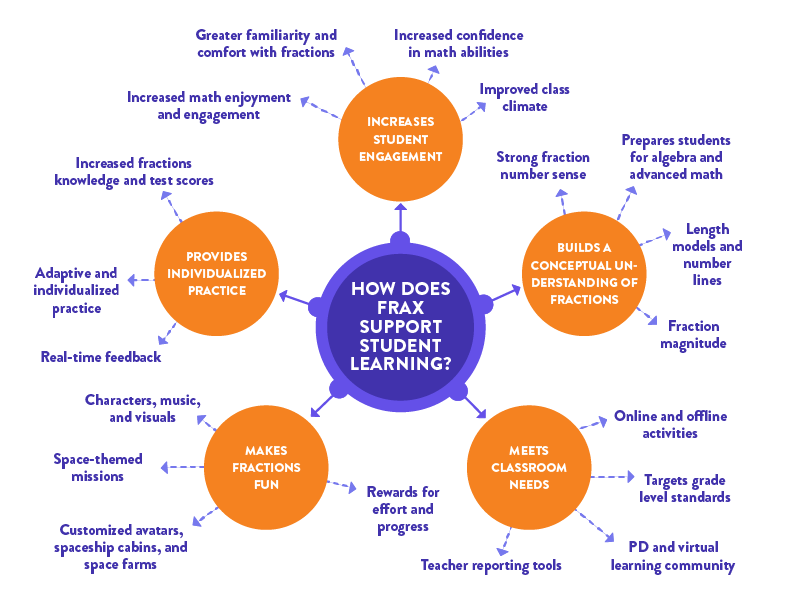
Adaptive and game-based, ExploreLearning Frax uses the latest evidence-based research and instructional methods to create a better way to learn fractions. But how exactly does Frax support student learning?
What is student learning?
Student learning is the goal of all instruction. Learning is the acquisition of skills and knowledge, and memory is the expression of what students have acquired or learned. The American Psychological Association released the top 20 principles for teaching and learning from Pre-K to grade 12, noting students’ perceptions about their abilities, previous content knowledge, learning context, practice, and timely feedback as a few of the factors that influence learning.
Teachers can enhance student learning in multiple ways. Some best practices include:
- Emphasize student time on task
- Promote active learning
- Communicate and uphold high expectations
- Utilize diverse ways of learning
- Provide prompt student feedback
How does technology impact student learning? Technology can encourage active learning, provide student feedback, and differentiate instruction to individual student needs in ways that would otherwise be impossible in a traditional classroom setting. However, the best technology takes things a step further by promoting principles of teaching and learning that actually enhance teachers' content instruction rather than replacing it.
Student learning and fractions
When it comes to fractions, research shows the strongest instruction incorporates visual representations like length models and number lines to foster an understanding of fraction magnitude (size). Students must have a deep grasp of fraction magnitude to perform advanced work with fractions, such as fraction arithmetic and estimating and comparing fractions.
Learning fractions can be easier and more effective with technology that meets students at their unique levels of understanding. Frax’s individualized and adaptive technology helps students develop a conceptual understanding of fractions and achieve grade-level proficiency thanks to instruction tailored to their individual levels of knowledge.
The impact of Frax on student learning
Frax provides targeted learning opportunities through carefully scaffolded missions that strengthen students’ understanding of fractions. And thanks to instantaneous feedback, students receive the just-in-time remediation and adaptive question selection they need for their current level of proficiency. When students use Frax, teachers receive real-time reporting to monitor student progress. They are also notified when students are struggling so they can easily intervene and help at any given moment.
Frax also increases student engagement thanks to game-based instruction, frequent rewards, and customization features. For example, students can unlock tokens in the game-based Frax Review Room where they receive targeted practice to support the unique skills they need additional practice with. Offline events allow students to participate in group discussions about the concepts they learned online with Frax, which helps facilitate the transfer of skills to the classroom context with peers.
With a modest investment of time (on average 13 hours to complete Frax Sector 1), students and teachers have achieved success with fractions and experienced substantial achievement gains. But Frax doesn’t only increase fractions knowledge and math achievement.
Effective implementation can increase students' engagement with math. In a recent qualitative study, elementary teachers found that Frax significantly increased math engagement and fractions knowledge, citing Frax’s game-driven learning, frequent rewards, personalization, and interactivity as particularly engaging aspects for learners.
